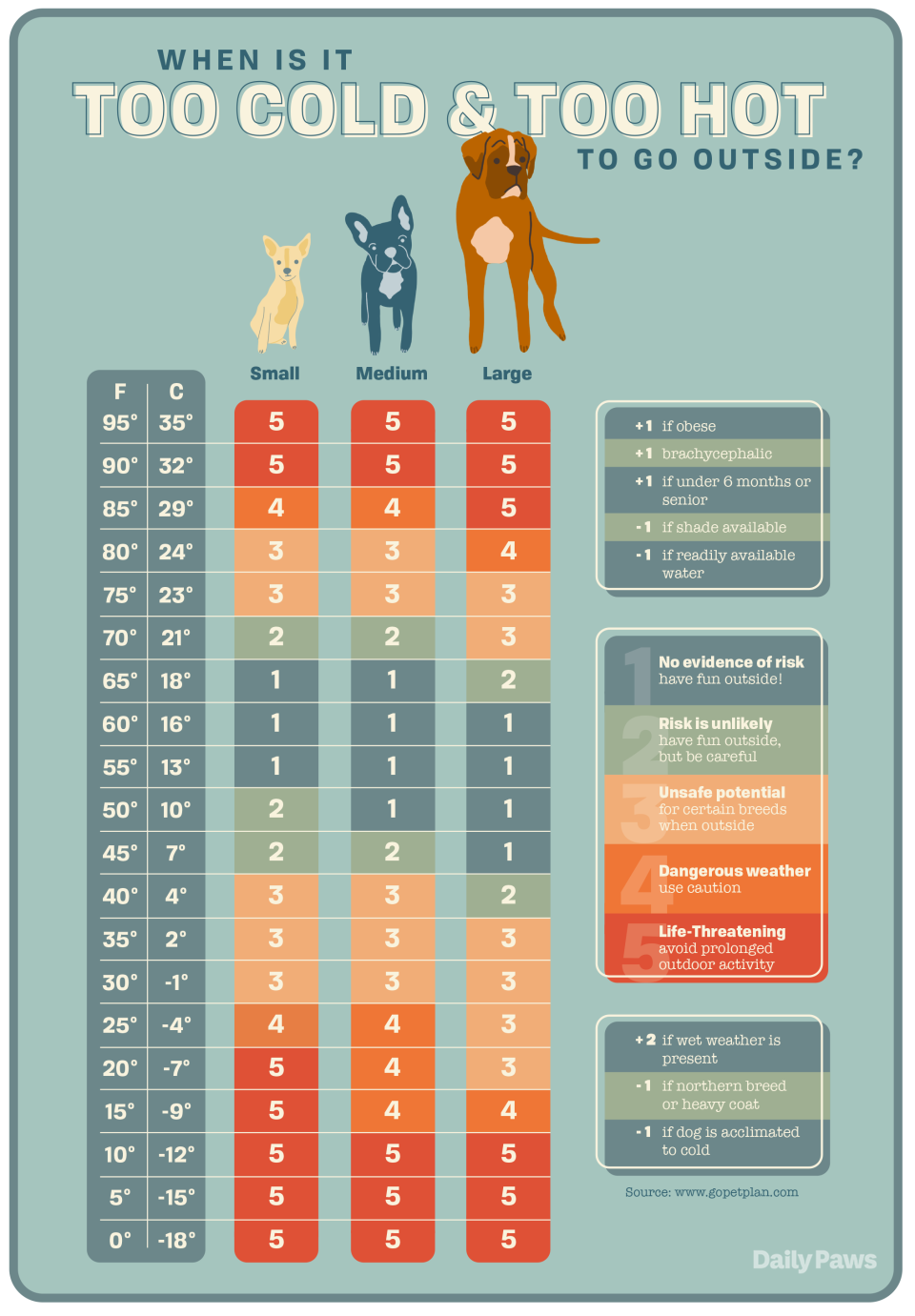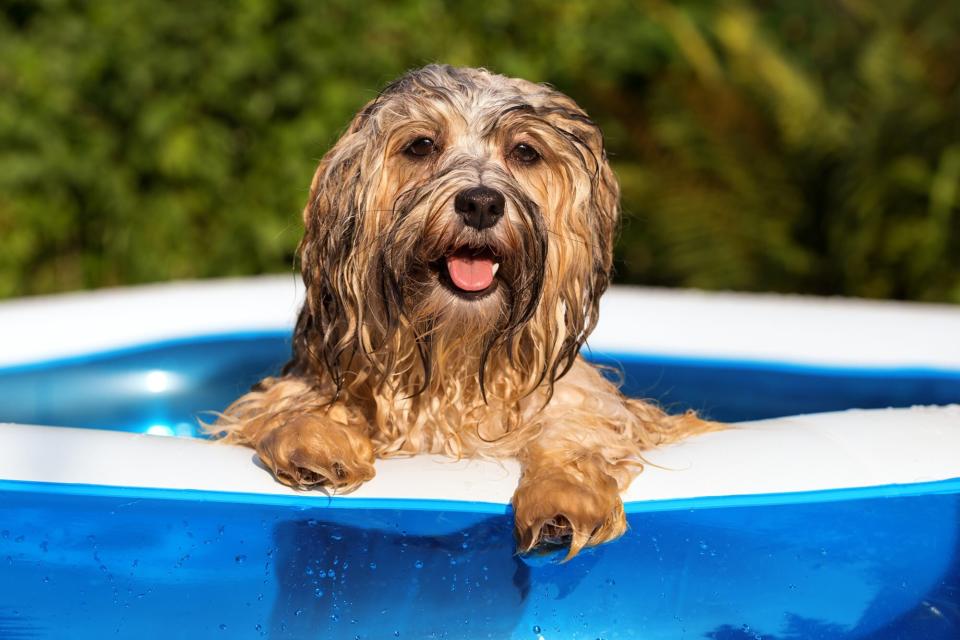Heatstroke in Dogs Can Be a Real Problem, So Learn How to Prevent it
TABLE OF CONTENTS
On This Page
Causes
Heatstroke vs. Heat Exhaustion
Signs
First Aid
Treatment
Long-Term Effects
Prevention
We know for certain that anything we want to do, our dogs are eager to join us! Summertime fun allows playful pups to enjoy any number of outdoor activities, from running and hiking to kayaking and swimming. However, this means we have to dedicate more attention to their well-being.
Bonnie Bragdon, DVM, MS, is co-founder and president of the Independent Veterinary Practitioners Association. "Our canine companions' exuberant approach to life can quickly put them in harm's way," she says. "When the outdoor temperature rises, it's important to carefully monitor dogs for heatstroke." An elevation in body temperature is called hyperthermia; heatstroke is a serious, life-threatening form of hyperthermia.
Understanding not only the reasons for heatstroke in dogs but also how to cool them down, prepare for veterinary care, and prevent future incidents gives you better peace of mind. So here's what you need to know.
Causes of Heatstroke in Dogs
Bragdon outlines the top reasons for heatstroke in dogs, including:
Being trapped in a car during hot weather (seriously, never leave dogs alone in cars!)
Excessive strenuous activity without appropriate rest, shade, and conditioning.
Physical impairment, which can lead to heat intolerance.
Being housed without access to shade and water.
Overheating during grooming.
"Brachycephalic breeds are more susceptible to heat intolerance. These dogs have short snouts, small nostrils, and narrow windpipes, making it difficult for them to expel heat by panting," Bragdon says.
Well-known brachycephalic breeds include boxers, chow chows, bulldogs, mastiffs, pugs, and shih tzus, but review this more complete list to see if your pup is on it. Additionally, Bragdon says heatstroke is more commonly reported in golden retrievers and Labrador retrievers than in other breeds.
She adds that other physical attributes could contribute to heat intolerance:
Obesity, which stresses the cardiopulmonary system
Heavy thick coats, which increase insulation
Chronic conditions such as heart disease and kidney disease
"Unfortunately, inattentive dog ownership is probably the leading cause of heatstroke in dogs," Bragdon says.
How hot is too hot? This chart helps you determine when to be outside with your dog and for how long based on the weather and any special circumstances, such as whether he's a brachycephalic dog breed, a senior dog, or has health issues.

Caitlin-Marie Miner Ong / Jody Tramontina
RELATED: Is a Shaved Dog More Comfortable? Not Always—And Here's Why
Heatstroke vs. Heat Exhaustion: What's the Difference?
Essentially, unchecked heat exhaustion causes heatstroke. Bragdon says while dogs tend to run hotter than humans anyway—usually with an average upper-level temperature of approximately 103 degrees F—heat exhaustion indicates your pup is in the early stages of distress.
"It's important to carefully monitor your dog for signs of heat exhaustion, which include excessive panting, lowered energy, unwillingness to move or walk, and rising body temperature," Bragdon says. "If ignored, heat exhaustion leads to heatstroke as a dog is no longer able to thermoregulate and core body temperature exceeds 105 degrees F." Another possible sign of heat exhaustion in your dog is a heat rash, which often develops in sensitive areas of the body after long-term exposure to hot and humid weather.
Although some dogs sweat small amounts, it's more a sign of anxiety and stress and doesn't help them cool down. They actually thermoregulate by panting: evaporation of moisture on their tongue and inside their mouth helps them chill out.
RELATED: Dehydration in Dogs: Causes, Symptoms, and How to Get Your Dog Rehydrated
Signs and Symptoms of Heatstroke in Dogs
If your doggo is with you on an excursion, it might be challenging to pick up on those initial cues of heat exhaustion, so if you notice any of the following symptoms of heatstroke, be prepared to take action right away. Bragdon says your pup might display signs such as:
A body temperature over 105 degrees F
Collapse
High heart rate and respiratory rate
Disorientation
Bright red tongue that may be hanging out of the mouth more than usual
Abnormal gum color
Abdominal pain
A dog's average temperature is anywhere from 99.5 to 102.5 degrees F. To safely check it and make sure they don't have a fever, use a rectal digital thermometer. A plastic baby thermometer works well, too.
Dog Heatstroke First Aid Treatment
If your dog presents any symptoms of heatstroke, Bragdon recommends that you bring him inside at once.
"If you suspect your dog is overheating, place him or her inside where you can cool the room with air conditioning or a fan," she says. "If you're outside without this access, a handy vehicle with air conditioning can be a lifesaver. Or if you're on a long hike and your dog is struggling with the heat, an early dip in cool, shallow water is better than attempting a long hike back to the car."
Bragdon says to seek immediate medical attention if he's non-responsive, his temperature stays above 103 degrees F, he has diarrhea or is vomiting, or he can't stop panting. "Labored breathing is a sign your dog is unable to normally thermoregulate by expelling heat through the respiratory tract," she says. Pre-cool the car and alert the veterinary clinic that you're bringing in a dog with heatstroke.
If your dog seems to calm down a bit after a few minutes in a chilled, shady area, you can administer cooling techniques as a form of first aid before taking him to the vet. Here's what Bragdon recommends:
Soak towels in cool, not cold, water. Don't use ice, ice packs, or alcohol, as this may result in extreme overcooling. It can also constrict blood vessels and actually prevent cooling.
Place your dog on the towels and, if a larger pet, perhaps another around his neck. Don't cover your dog's body completely or it may trap heat.
Note the time, and take his temperature every couple of minutes.
If he's up to it, let him have little sips of water at room temperature or with a little chicken broth. However, don't force him to drink.
Stop cooling methods when his temperature reaches 103 degrees F. Note the time again so you can tell the vet how long your pup's temperature was elevated.
Then pre-cool the car and call the vet clinic to tell the staff you're on the way with a dog in possible heatstroke. "Seek veterinary attention even if your dog appears to return to normal," Bragdon says. "Complications can frequently occur secondary to heatstroke."

Dorottya_Mathe / Getty
RELATED: How to Create a Pet First Aid Kit
How To Treat Heatstroke in Dogs
Priority Pet Hospital states that a veterinary team treats heatstroke in dogs by:
Continuing cooldown treatment.
Administering IV fluids, oxygen, and drugs for vomiting and other symptoms, if necessary.
Monitoring for shock.
Testing blood to determine more severe health complications, such as bleeding disorders, kidney failure, and organ damage.
How long heatstroke symptoms last in dogs really depends. As you might expect, puppies and seniors, as well as pets with pre-existing health concerns, are most at risk for medical issues. "Early intervention will prevent life-threatening complications, which can occur rapidly with heatstroke," Bragdon says. Generally, if a dog shows signs of recovery within 24–48 hours at the clinic, he'll likely be okay.
Long-Term Effects of Heatstroke in Dogs
In most cases, dogs require hospitalization for about a week to fully recover. Priority Pet Hospital indicates that some dogs need transfusions of plasma or treatment for brain swelling. Occasionally, heatstroke causes seizures in dogs and other organ complications.
How To Prevent Heatstroke in Dogs
Our canine friends can certainly enjoy the outdoors without concern about heat exhaustion or heatstroke if you put the proper measures in place. "My own dogs live primarily outside in a variety of conditions including the heat of summer," Bragdon says. "They have access to a large, shaded garage with a fan and plenty of water, as well as cool shady patches of dirt for digging and napping."
She says because they live outside, her dogs gradually acclimated to changes in seasonal temperatures, but you could always add misting fans or doggie pools to your pet's playground. And give them sweet summertime treats, like watermelon popsicles!
Even with her outdoor dogs, Bragdon still limits physical activity during the heat of the day, walking them in the late evening or early morning. This is an especially good point for exercising pets who stay mostly indoors and aren't accustomed to activity during hot weather. Bragdon says if your dog must be active during the heat of the day, plan for frequent rest breaks in shady areas. "Also have plenty of water on hand and carry a rectal thermometer to closely monitor your dog's ability to cope with the stress of hot weather," she adds.
She also recommends booking time at an indoor doggie daycare facility rather than risk your pup overheating during outdoor activities.

